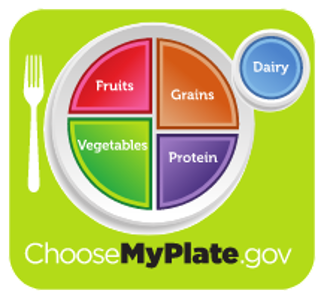
Written by UConn Dietetics Masters Student Stephanie Graffeo
A variety of foods help keep our hearts healthy. Fruits and vegetables are especially beneficial to our bodies because they are packed with vitamins and minerals, and especially fiber. Grains also offer fiber, especially whole grains. Fiber can help lower the amount of “bad” cholesterol (LDL) in the body.¹ Omega-3’s found in fish and some plant foods are a “healthy” fat that support heart health. This fat helps reduce triglycerides, a type of fat in the blood. They slow the buildup of plaque, a substance made up of fat, cholesterol and calcium that hardens and blocks blood flow in the arteries.¹
Some foods can affect heart health negatively and are best to have in lower amounts. One of these foods is the mineral, salt. Salt is made of sodium and chloride and is found in many processed or pre-prepared foods. Too much salt in the diet may lead to high blood pressure¹ which can affect heart health. Another food to limit is saturated fat. Saturated fat increases the “bad” (LDL) cholesterol in your blood, the type that may more readily “stick” to the inside of your arteries and reduce blood flow.¹ Saturated fat can be limited by eating lean animal protein and low-fat dairy products such as fat free milk or reduced fat yogurt. Try also to eat a more plant-based diet which would increase those healthy fruits and veggies!
Using the My Plate visual is a handy way to plan meals and snacks! At each meal, aim to have about half of your plate filled with fruits and vegetables. About a quarter of your plate should be a type of whole grain, while the other quarter should a type of lean protein.² Snacks can include 2-3 food groups at once!
Try this easy, delicious, heart healthy recipe! ¹
Mediterranean Couscous Salad with Chickpeas (4 Servings)
Ingredients:
- 1 cup uncooked whole-wheat couscous
- 2 medium cucumbers, peeled and cut into 1-inch pieces
- 1 1/2 cups green or purple grapes, halved
- 3 green onions (about 1/4 cup), chopped
- 1 15.5-ounce can no-salt-added or low-sodium chickpeas, rinsed and drained
- 1/3 cup chopped kalamata olives
- 1/2 cup chopped fresh parsley
- 1 1/2 tablespoons olive oil
- 1 tablespoon fresh lemon juice
- 1/4 cup fat-free feta cheese, crumbled
Directions:
- Prepare the couscous using the package directions, omitting the salt.
- Meanwhile, in a large bowl, stir together the cucumbers, grapes, and onions.
- Using a fork, fluff the couscous. Stir into the cucumber mixture. Stir in the chickpeas, olives, parsley, oil, and lemon juice. Sprinkle with the feta.
References
1 American Heart Association: To be a relentless force for a world of longer, healthier lives. www.heart.org. (n.d.). Retrieved February 20, 2023, from https://www.heart.org/en/
2 Food Group Gallery. MyPlate. (n.d.). Retrieved February 22, 2023, from https://www.myplate.gov/eat-healthy/food-group-gallery
This material is funded by UDSA’s Supplemental Nutrition Assistance Program (SNAP).
This institution is an equal opportunity provider.